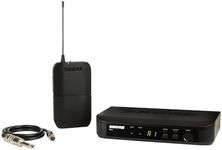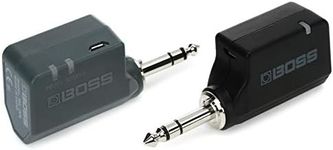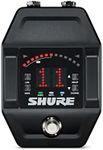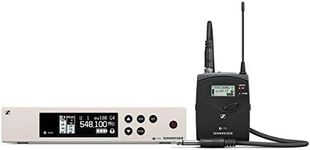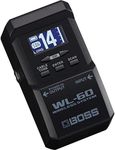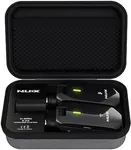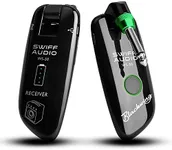Buying Guide for the Best Wireless Guitar Systems
Choosing a wireless guitar system can really free up your movement on stage or during practice, letting you play without worrying about tripping over cables. The right system will give you reliable sound quality, minimal interference, and enough range for your needs. When shopping, it's important to understand the main features and how they relate to your playing style and environment. By focusing on the key specifications, you can find a system that matches your needs and helps you perform at your best.Frequency BandThe frequency band is the range of radio frequencies the system uses to transmit your guitar signal wirelessly. This is important because different bands can be more or less crowded, which affects interference and reliability. Common bands include VHF, UHF, and 2.4GHz. VHF is older and can be more prone to interference, UHF is popular for its balance of range and reliability, and 2.4GHz is convenient but can be crowded due to Wi-Fi and Bluetooth devices. If you play in places with lots of wireless devices, a less crowded band may be better. Always check local regulations, as some bands may have restrictions in your area.
RangeRange tells you how far you can move from the receiver before the signal starts to drop out. This is measured in feet or meters. Short-range systems (up to 30 feet) are fine for home practice or small stages, while medium-range (30-100 feet) suits most band rehearsals and gigs. Long-range systems (over 100 feet) are best for large stages or outdoor performances. Think about where you'll use the system most—if you only play in small venues, you don't need the longest range, but if you move around a lot or play big shows, more range is helpful.
LatencyLatency is the slight delay between when you play a note and when you hear it through the system. Lower latency is better, as high latency can make playing feel unnatural. Latency is measured in milliseconds (ms). Under 5ms is usually unnoticeable and ideal for most players, 5-10ms is acceptable for many, but above 10ms can start to feel laggy, especially for fast or precise playing. If you play styles that require tight timing, like funk or metal, aim for the lowest latency possible.
Battery LifeBattery life tells you how long the transmitter and receiver will work before needing a recharge or new batteries. Some systems use rechargeable batteries, while others use standard AA or AAA batteries. Short battery life (under 4 hours) is fine for short practice sessions, medium (4-8 hours) covers most gigs, and long (over 8 hours) is best for long rehearsals or festivals. If you play long sets or don't want to worry about changing batteries mid-show, look for longer battery life.
Number of ChannelsChannels let you choose different frequencies to avoid interference from other wireless devices. More channels mean more flexibility, especially if you play with other musicians using wireless gear. Basic systems may have just a few channels, while advanced ones offer dozens. If you play solo or in small groups, a few channels may be enough, but for larger bands or busy venues, more channels help you find a clear signal.
Build Quality and SizeBuild quality refers to how sturdy and durable the transmitter and receiver are, while size affects how comfortable they are to use. Lightweight, compact systems are easy to clip onto your strap or belt and are less likely to get in the way. Heavier, more rugged systems may last longer if you play a lot of gigs or travel often. If you play at home, size and toughness may not matter as much, but for frequent performers, a solid, comfortable design is important.
Sound QualitySound quality is about how accurately the system transmits your guitar's tone. Look for systems that promise full frequency response and low noise. Some cheaper systems can color your sound or add unwanted noise. If you care about preserving your guitar's natural tone, look for systems with good reviews for sound quality and features like digital transmission, which often provides clearer audio.




